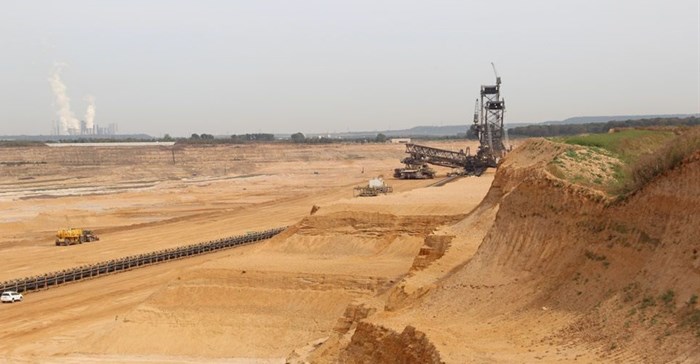HAMBACH COAL MINE - Environmental activists wearing hazard suits marched onto one of the world's largest open-pit coal mines, near Bonn, on Sunday, the eve of 196-nation UN climate talks in the west German city.

Photo: Earth Island
Some two hundred protesters crossed a denuded no-man's land and lined up like guards at the edge of the 40km2 Hambach opencast coal mine, the biggest manmade hole in Europe.
The demonstration ended peacefully after several hours, with activists retreating from the site.
Operated by German electricity producer RWE Power AG, the Hambach operation mines lignite, a brownish, low-grade coal.
Its high carbon content makes it one of the most polluting of fossil fuels.
As dozens of police encircled a 30-storey high bucket-wheel excavator, the protesters unfurled banners reading, "Welcome to COP23", "Burn borders, not coal" and "Climate Justice".
COP23 refers to the 23rd "Conference of the Parties," the formal name for the annual UN climate summit.
"On the international stage, politicians and corporations present themselves as climate saviours, while a few miles away the climate is literally being burned," said Janna Aljets, spokesperson for climate justice group Ende Gelande.
So far, RWE have broken ground on about half of the area designated for mining, and dug to a depth of more than 300 metres below sea level. The company extracts 40 million tonnes of lignite every year, according to its website.
The site holds reserves estimated at 2.5-billion tonnes.
The protesters on Sunday included Pacific islanders whose low-lying nations are already reeling from rising seas and ever-stronger storms driven by global warming.
"If we don't shut the mines down, we have no chance," said Zane Sikulu from Tonga. "We're here to protect our land, our culture and our identities as Pacific people."
According to a study published last week in Environmental Research Letters, holding sea level rise to 50cm by 2100 would become nearly impossible if coal-fired energy is not phased out by mid-century.
"If emissions continue unchecked, oceans could rise by around 130cm in 2100" -- nearly double the maximum forecast in the UN climate science panel's benchmark report, co-author Carl-Friedrich Schleussner, a scientist at the Potsdam Institute for Climate Impact Research in Germany, told AFP.
Coal is responsible for 45% of global CO2 emissions from the energy sector, as well as other greenhouse gas pollutants and small particles hazardous to health, according to the International Energy Agency.
The world is today burning more coal than it ever has, with global demand increasing an average of four percent between 2000 and 2013. Under current policies, growth in use is expected to taper off over the next five years, but not peak until about 2030.
At the same time, the UN said in a recent report that 80 to 90 percent of known coal reserves would have to stay in the ground for global warming to be held at under two degrees Celsius, the temperature target laid down by 2015 Paris climate treaty.
The UN climate talks, tasked with making the Paris Agreement operational, open today in Bonn and run through November 17.









































